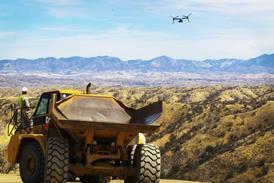PAUL PHELAN / CAIRNS
Australia's major air carriers are examining whether they can establish straight-in non-precision approach capabilities at any airport on their domestic route networks. Qantas wants its Boeing 737s and 717s, BAe 146s and Bombardier Dash 8s to be able to fly instrument approaches into dozens of airports not equipped with instrument landing systems (ILS) or radar.
Airlines are leaning towards the demonstration of "'equivalent safety" to current non-directional beacon approaches, but using GPS. The Civil Aviation Safety Authority (CASA) has commissioned a study by former Airservices Australia navigation systems expert Professor Brian O'Keefe on the comparative reliability of the two systems.
O'Keefe reports that new GPS FDE (fault detection and exclusion) equipment certificated to technical service order C146 now allows approaches to be continued even if one or more satellites is lost. He says: "That is possible with the new equipment because of the reliability resulting from an increase in the satellite constellation from 18 to more than 24 satellites, the fact that selective availability has been set to zero, and - in the larger aircraft - the integration of GPS with inertial reference systems."
O'Keefe conducted worst-case and control simulations on six combinations of onboard equipment, radio-navigation aids and alternate airfield requirements, concluding that GPS FDE provided the safest of the six options studied. CSA is evaluating the report.
Source: Flight International























